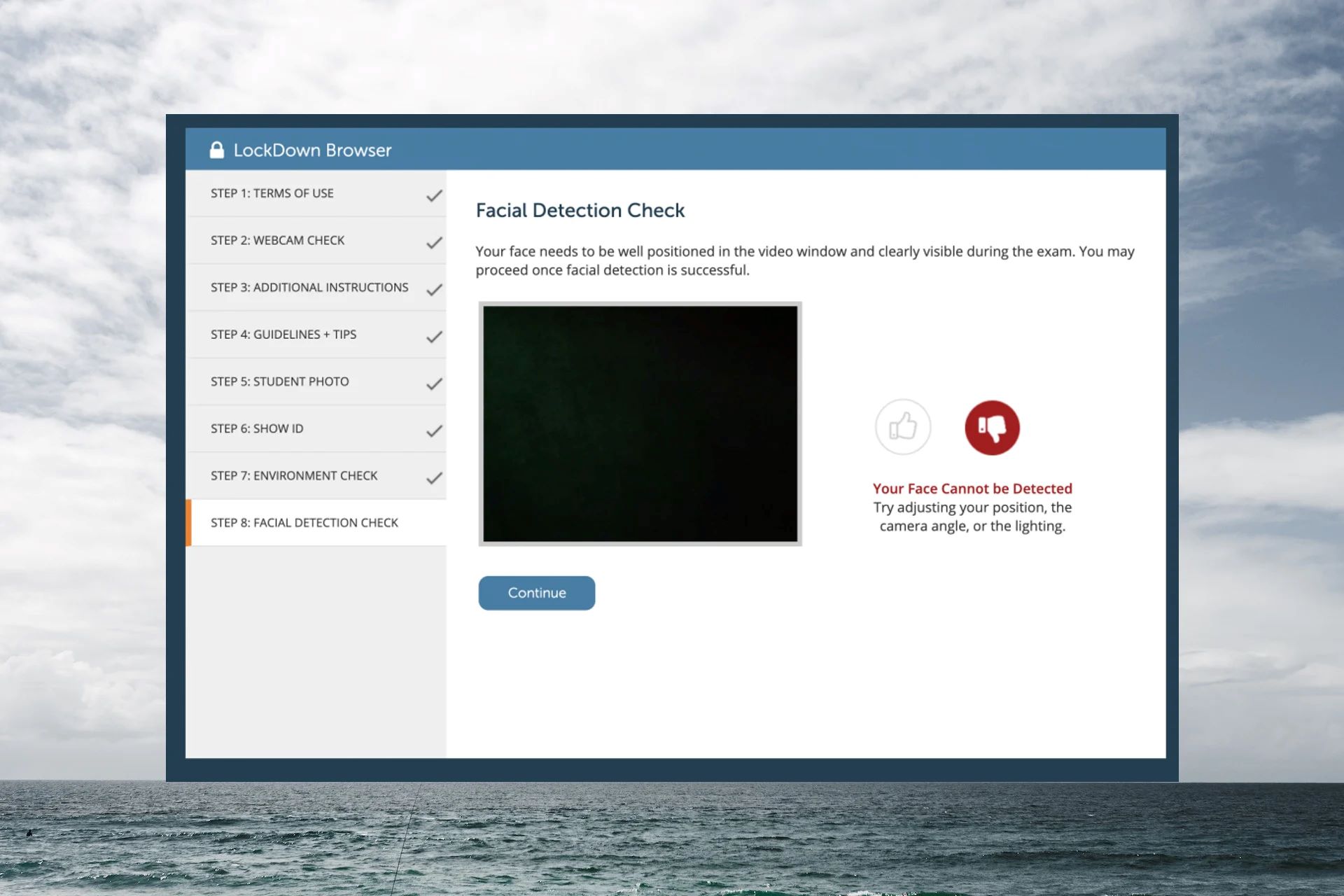Introduction
Browser compatibility testing is a crucial aspect of web development and design. In today's digital age, where the internet serves as the primary platform for businesses and individuals to connect, it is essential to ensure that websites and web applications function seamlessly across different web browsers and devices. This process involves evaluating the performance and functionality of a website or web application across various web browsers, such as Google Chrome, Mozilla Firefox, Safari, and Internet Explorer, to name a few.
Ensuring that a website or web application is compatible with multiple browsers is vital for delivering a consistent and user-friendly experience to visitors. When users access a website, they expect it to display and function correctly, regardless of the browser or device they are using. Browser compatibility testing helps identify and address any discrepancies in the website's appearance and functionality across different browsers, ultimately enhancing user satisfaction and engagement.
As technology continues to evolve, so do web browsers and their capabilities. Each browser interprets and executes web code differently, which can lead to variations in how a website is displayed and functions. Factors such as HTML, CSS, JavaScript, and other web technologies may be interpreted differently by various browsers, potentially causing discrepancies in the website's layout, features, and performance.
In this article, we will delve into the intricacies of browser compatibility testing, exploring its significance in web development and the challenges it presents. Additionally, we will discuss best practices for conducting effective browser compatibility testing and explore the tools available to streamline this process. By the end of this article, you will have a comprehensive understanding of browser compatibility testing and its pivotal role in delivering a seamless web experience across diverse browsers and devices.
What is Browser Compatibility Testing?
Browser compatibility testing is a fundamental process in web development that involves evaluating the performance and functionality of a website or web application across multiple web browsers and devices. It aims to ensure that the website displays and operates consistently across various browsers, such as Google Chrome, Mozilla Firefox, Safari, Internet Explorer, Microsoft Edge, and others. This testing process is essential due to the diverse nature of web browsers and the different ways in which they interpret and execute web code.
When a website is designed and developed, it is imperative to consider the varying capabilities and rendering engines of different web browsers. Each browser may interpret HTML, CSS, JavaScript, and other web technologies differently, potentially leading to discrepancies in the website's appearance and behavior. Browser compatibility testing helps identify and address these discrepancies, ensuring that the website delivers a uniform and optimal user experience across all platforms.
During browser compatibility testing, web developers and quality assurance professionals meticulously examine the website's layout, design elements, functionality, and performance on different browsers. They assess how the website responds to user interactions, such as clicking buttons, filling out forms, and navigating through pages. Additionally, they scrutinize the website's responsiveness and adaptability to different screen sizes and resolutions, considering the prevalence of mobile and tablet usage for web browsing.
Furthermore, browser compatibility testing encompasses the evaluation of cross-browser compatibility, which involves testing the website across various versions of the same browser. This is crucial as different browser versions may have distinct rendering engines and support for web standards, potentially impacting the website's display and functionality.
In essence, browser compatibility testing is a proactive measure to ensure that a website or web application meets the expectations of users regardless of the web browser or device they use. By conducting thorough compatibility testing, web developers can identify and rectify any issues that may hinder the website's performance, thereby enhancing its accessibility, usability, and overall user satisfaction.
In the next section, we will explore the significance of browser compatibility testing in the context of web development and user experience.
Why is Browser Compatibility Testing Important?
Browser compatibility testing holds immense significance in the realm of web development and user experience. Its importance stems from the diverse landscape of web browsers and devices, each with its unique capabilities and rendering engines. Several compelling reasons underscore the critical importance of conducting thorough browser compatibility testing:
-
User Experience Consistency: Ensuring that a website functions consistently across different web browsers and devices is paramount for delivering a seamless user experience. Users expect websites to display and operate flawlessly, regardless of the browser they use. Browser compatibility testing helps maintain consistency in the website's appearance, functionality, and performance, thereby enhancing user satisfaction and engagement.
-
Market Reach and Accessibility: With a multitude of web browsers available to users, ranging from popular choices like Google Chrome and Mozilla Firefox to less common ones, it is essential for websites to be accessible across these platforms. Browser compatibility testing enables websites to reach a broader audience, accommodating users who prefer various browsers and ensuring inclusivity in web accessibility.
-
Business Credibility and Trust: A website that functions inconsistently across different browsers can undermine the credibility and trustworthiness of a business or brand. Users may perceive such discrepancies as a lack of attention to detail or technical competence, potentially impacting their trust in the website's content and services. By conducting thorough compatibility testing, businesses can uphold their credibility and foster trust among their online audience.
-
Search Engine Visibility: Search engines prioritize user experience, and a website's compatibility across different browsers and devices contributes to its overall user-friendliness. Websites that are compatible with multiple browsers are more likely to rank higher in search engine results, thereby enhancing their visibility and attracting a larger organic traffic.
-
Adaptation to Technological Advancements: As web browsers evolve and introduce new features and standards, websites must adapt to these advancements to remain relevant and competitive. Browser compatibility testing allows web developers to stay abreast of technological changes and ensure that their websites are compatible with the latest browser versions, fostering a forward-looking approach to web development.
In essence, browser compatibility testing is indispensable for creating a robust online presence, fostering positive user experiences, and maintaining a competitive edge in the digital landscape. By prioritizing compatibility across diverse browsers and devices, businesses and web developers can elevate their websites' performance, accessibility, and credibility, ultimately enriching the online experience for users worldwide.
Common Challenges in Browser Compatibility Testing
Browser compatibility testing, while essential, presents several challenges that web developers and quality assurance professionals often encounter. These challenges can significantly impact the efficiency and effectiveness of the testing process, requiring proactive measures to address them. Understanding and mitigating these common challenges is crucial for ensuring thorough and accurate browser compatibility testing. The following are some prevalent challenges in this domain:
-
Cross-Browser Rendering Discrepancies: One of the primary challenges in browser compatibility testing is the presence of rendering discrepancies across different web browsers. Each browser interprets and renders web code in its unique way, leading to variations in the layout, styling, and functionality of a website. Identifying and rectifying these discrepancies requires meticulous testing and debugging to ensure a consistent user experience across all browsers.
-
Legacy Browser Support: Compatibility with older or legacy web browsers poses a significant challenge, especially when developing modern websites that leverage advanced web technologies and standards. Legacy browsers may lack support for newer features and may exhibit rendering issues, necessitating additional effort to accommodate their limitations without compromising the website's functionality on modern browsers.
-
Responsive Design and Mobile Compatibility: With the proliferation of mobile devices, ensuring responsive design and mobile compatibility across various browsers presents a notable challenge. Websites must adapt seamlessly to different screen sizes and resolutions, and this adaptability must be consistent across all browsers, including mobile versions. Testing responsive design elements thoroughly is essential to deliver a cohesive user experience.
-
Browser Version Fragmentation: The existence of multiple versions of the same browser further complicates compatibility testing. Each version may have distinct rendering engines and support for web standards, leading to inconsistencies in how the website is displayed and functions. Testing across various browser versions is essential to address version-specific issues and ensure comprehensive compatibility.
-
Complex CSS and JavaScript Interactions: Modern websites often rely heavily on complex CSS styling and JavaScript interactions to deliver dynamic and interactive user experiences. Ensuring consistent behavior and performance of these elements across different browsers can be challenging, as browsers may interpret CSS and JavaScript code differently, leading to unexpected behavior and functionality discrepancies.
-
Resource Intensive Testing: Conducting thorough browser compatibility testing across multiple browsers and devices can be resource-intensive and time-consuming. The need to test on various platforms, devices, and browser versions demands significant effort and resources, making efficient testing methodologies and tools essential to streamline the process.
Addressing these challenges requires a strategic approach, leveraging testing tools, automation, and best practices to mitigate compatibility issues effectively. By acknowledging and proactively tackling these common challenges, web developers can enhance the quality and reliability of their websites across diverse browsers and devices.
Best Practices for Browser Compatibility Testing
Ensuring comprehensive browser compatibility testing requires the implementation of best practices that streamline the testing process and facilitate the identification and resolution of compatibility issues. By adhering to these best practices, web developers and quality assurance professionals can enhance the effectiveness and efficiency of compatibility testing, ultimately delivering a seamless and consistent user experience across diverse web browsers and devices.
-
Early and Continuous Testing: Integrate browser compatibility testing into the development lifecycle from the outset. By testing early and continuously, potential compatibility issues can be identified and addressed promptly, reducing the likelihood of encountering major discrepancies later in the development process.
-
Comprehensive Browser Coverage: Test the website across a wide range of web browsers, including popular choices such as Google Chrome, Mozilla Firefox, Safari, Microsoft Edge, and Internet Explorer, as well as less common browsers. Additionally, consider testing on both desktop and mobile browsers to ensure comprehensive coverage.
-
Version-Specific Testing: Pay close attention to testing the website across different versions of each browser, particularly focusing on the most widely used versions. This approach helps identify version-specific compatibility issues and ensures a consistent user experience across various browser iterations.
-
Utilize Virtualization and Emulation: Leverage virtualization and emulation tools to simulate different operating systems and browser environments. This enables testing across diverse platforms without the need for physical access to multiple devices, significantly streamlining the testing process.
-
Responsive Design Testing: Given the prevalence of mobile browsing, prioritize testing the website's responsiveness and mobile compatibility across various browsers and devices. Ensure that the website adapts seamlessly to different screen sizes and resolutions, delivering a cohesive user experience on mobile platforms.
-
Automated Testing Tools: Implement automated testing tools and frameworks to expedite compatibility testing. Automation can significantly reduce testing time and effort while providing consistent and repeatable test results across multiple browsers and devices.
-
Debugging and Issue Tracking: Establish robust debugging and issue tracking processes to efficiently address compatibility issues as they are identified. Utilize browser developer tools and debugging utilities to pinpoint and resolve rendering discrepancies and functionality issues across different browsers.
-
User Feedback and Real-World Testing: Solicit user feedback and conduct real-world testing across diverse environments to gather insights into the website's performance on various browsers. User feedback can uncover nuanced compatibility issues that may not be apparent through traditional testing methods.
By embracing these best practices, web development teams can fortify their browser compatibility testing efforts, fostering a robust and consistent web experience for users across the digital landscape. Emphasizing early testing, comprehensive coverage, and strategic testing methodologies empowers web developers to proactively address compatibility challenges, ultimately elevating the quality and reliability of their websites across diverse browsers and devices.
Tools for Browser Compatibility Testing
In the dynamic landscape of web development, a plethora of tools and resources are available to facilitate comprehensive browser compatibility testing. These tools empower web developers and quality assurance professionals to assess and validate the performance of websites across diverse web browsers and devices, streamlining the testing process and enhancing the overall user experience. From virtualization platforms to automated testing frameworks, the following tools are instrumental in conducting effective browser compatibility testing:
-
CrossBrowserTesting: This cloud-based platform offers a comprehensive suite of testing tools, allowing users to perform live interactive testing across a wide range of browsers and devices. With features such as visual testing, responsive design testing, and automated screenshot comparisons, CrossBrowserTesting enables thorough validation of website compatibility.
-
BrowserStack: BrowserStack provides a robust testing infrastructure that supports real device testing, allowing users to test websites on a vast array of mobile devices and tablets. Additionally, BrowserStack offers seamless integration with popular development and testing frameworks, facilitating efficient cross-browser testing.
-
Sauce Labs: As a cloud-based testing platform, Sauce Labs offers extensive browser and device coverage for testing web applications. Its scalable infrastructure and support for automated testing frameworks make it a valuable tool for conducting parallel testing across multiple browsers and platforms.
-
LambdaTest: LambdaTest offers a cloud-based testing platform that enables users to perform interactive and automated testing across a diverse set of browsers and operating systems. With features such as geolocation testing and responsive design testing, LambdaTest empowers comprehensive browser compatibility validation.
-
VirtualBox: VirtualBox is an open-source virtualization tool that allows users to create and manage virtual machines, enabling the simulation of different operating systems and browser environments. It serves as a cost-effective solution for testing websites across various platforms without the need for physical devices.
-
Browser Developer Tools: Most modern web browsers, such as Google Chrome and Mozilla Firefox, are equipped with robust developer tools that facilitate in-depth testing and debugging. These tools offer features for inspecting elements, modifying CSS and HTML in real-time, and simulating different device resolutions, empowering developers to identify and address compatibility issues directly within the browser environment.
-
Automated Testing Frameworks: Frameworks such as Selenium and Puppeteer provide powerful automation capabilities for cross-browser testing. By scripting test scenarios and executing them across multiple browsers, these frameworks streamline the testing process and ensure consistent validation of website compatibility.
By leveraging these tools and resources, web development teams can effectively navigate the complexities of browser compatibility testing, ensuring that websites deliver a seamless and consistent user experience across diverse browsers and devices. From cloud-based testing platforms to open-source virtualization tools, the availability of these resources empowers web developers to proactively address compatibility challenges and elevate the quality and reliability of their web applications.
Conclusion
In conclusion, browser compatibility testing stands as a cornerstone of web development, playing a pivotal role in ensuring a seamless and consistent user experience across diverse web browsers and devices. The significance of this testing process cannot be overstated, as it directly impacts user satisfaction, business credibility, and the overall success of websites and web applications in the digital landscape.
By embracing best practices such as early and continuous testing, comprehensive browser coverage, and the utilization of automated testing tools, web development teams can fortify their compatibility testing efforts, proactively addressing potential issues and delivering robust, cross-compatible web experiences. The challenges inherent in browser compatibility testing, including cross-browser rendering discrepancies, legacy browser support, and responsive design complexities, can be effectively mitigated through strategic testing methodologies and the utilization of advanced testing tools and resources.
Furthermore, the availability of cloud-based testing platforms, virtualization tools, and automated testing frameworks empowers web developers to navigate the complexities of compatibility testing with efficiency and precision. These resources enable thorough validation of website compatibility across various browsers and devices, fostering a user-centric approach to web development and design.
As technology continues to evolve and new web browsers emerge, the need for comprehensive browser compatibility testing will persist, driving the continuous improvement of web experiences and the seamless adaptation of websites to the ever-changing digital landscape. By prioritizing compatibility across diverse browsers and devices, businesses and web developers can elevate their websites' performance, accessibility, and credibility, ultimately enriching the online experience for users worldwide.
In essence, browser compatibility testing is not merely a technical requirement but a strategic imperative for web development. It embodies a commitment to delivering inclusive, user-friendly web experiences that transcend the boundaries of web browsers and devices, fostering a digital ecosystem where accessibility, reliability, and consistency are paramount. Through meticulous testing, strategic implementation of best practices, and the utilization of advanced testing tools, web developers can navigate the complexities of browser compatibility with confidence, ultimately shaping a digital landscape where web experiences are universally accessible and consistently exceptional.

























